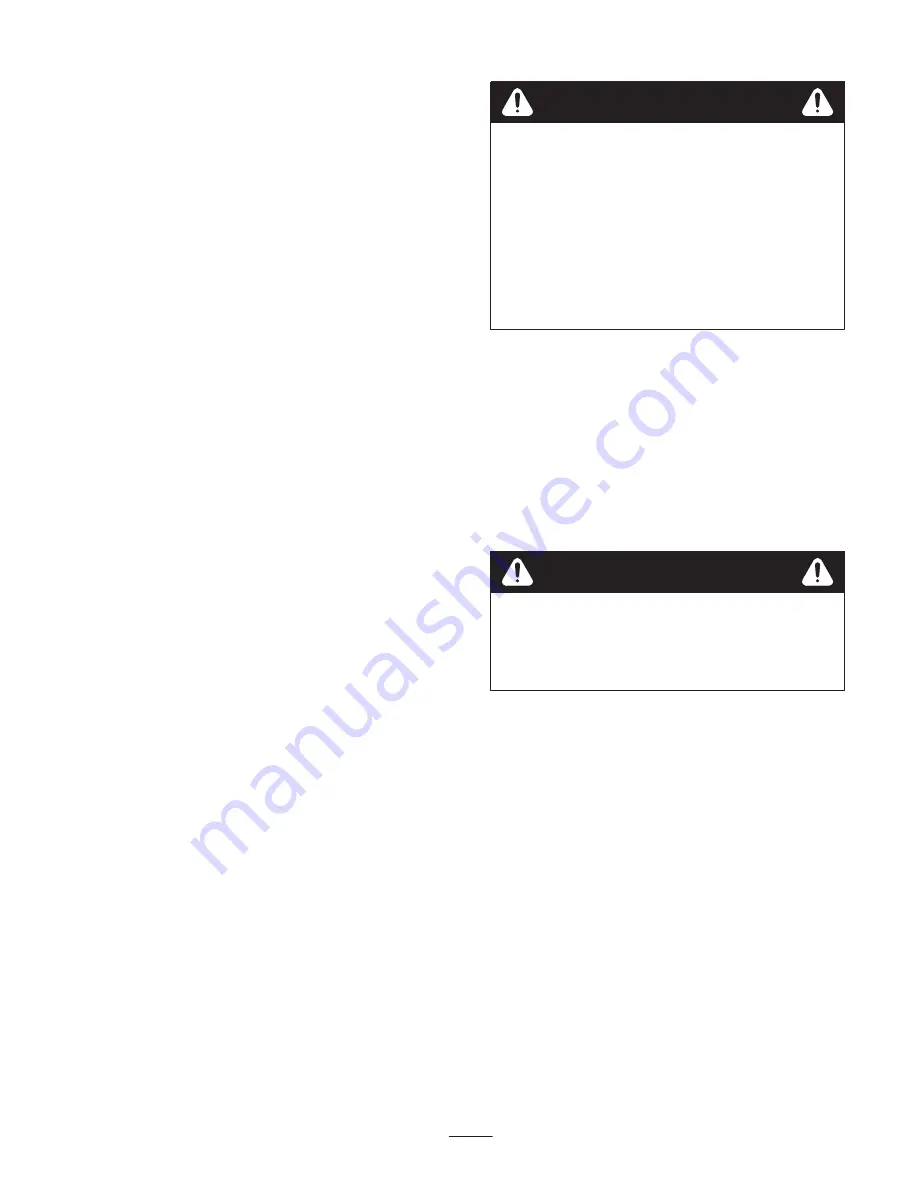
25
Stopping Engine
To stop engine, rotate ignition key to OFF and engage
parking brake. Remove key from switch to prevent
accidental starting.
New Vehicle Break–in
Your Workman is ready for work. To provide proper
performance and long vehicle life, follow these guidelines
for the first 100 operating hours.
•
Check the fluid and engine oil levels regularly and be
alert for indications of overheating in any component of
the vehicle.
•
After starting a cold engine, let it warm up at idle speed
for about 15 seconds before shifting into gear.
•
Avoid racing the engine.
•
To assure optimum performance of the brake system,
burnish (break–in) the brakes before use. To burnish
brakes: Operate the vehicle at full speed for 3 minutes,
apply the brakes for 30 seconds while driving in 1st
gear. Repeat these steps 20 to 30 times. To verify the
brakes are completely burnished remove a rear tire and
inspect the brake drum for residue. The residue color
should be light grey to almost white color.
•
Vary vehicle speeds during operation. Avoid excessive
idling. Avoid fast starts and quick stops.
•
A break–in oil for the engine is not required. Original
engine oil is the same type specified for regular oil
changes.
•
Refer to Maintenance section of Operator’s Manual for
any special low hour checks.
Check Interlock System
The purpose of the interlock system is to prevent the engine
from cranking or starting unless the clutch pedal is
depressed.
To verify clutch interlock switch operation:
1.
Sit on operator’s seat and engage parking brake. Move
shift lever to NEUTRAL position.
2.
Without depressing clutch pedal, rotate key clockwise
to start position.
3.
If engine cranks or starts, there is a malfunction in the
interlock system that must be repaired before operating
vehicle.
If safety interlock switches are disconnected or
damaged the machine could operate unexpectedly
causing personal injury.
•
Do not tamper with the interlock switches.
•
Check the operation of the interlock switches
daily and replace any damaged switches before
operating the machine.
•
Replace switches every two years or 1500 hours,
whichever occurs first, regardless of whether
they are operating properly or not.
Caution
Refer to Attachment Operator’s Manual for procedure
on checking attachment interlock system.
Operating Characteristics
The vehicle is designed with safety in mind. It has four
wheels for added stability. It uses familiar automotive style
controls, including the steering wheel, brake pedal, clutch
pedal, accelerator pedal, and gear shift. It is important to
remember, however, that this vehicle is not a passenger car.
It is a work vehicle and is designed for off road use only.
The WORKMAN is an off–highway vehicle
only, and is not designed, equipped, or
manufactured for use on public streets, roads
or highways.
Warning
The vehicle has special tires, low gear ratios, a locking
differential, and other features that give it extra traction.
These features add to the versatility of the vehicle but, they
can also get you into dangerous situations. You must keep
in mind that the vehicle is not a recreation vehicle. It is not
an all terrain vehicle. And, it is definitely not meant for
“stunt driving” or “horsing around”. It is a work vehicle,
not a play vehicle. Children should not be allowed to
operate the vehicle. Anyone who operates the vehicle
should have a motor vehicle license and be trained how to
operate vehicle.
Driver and passenger should always use the seat belts.
If you are not experienced at driving the vehicle, practice
driving it in a safe area away from other people. Be sure
you are familiar with all the vehicle’s controls, particularly
those used for braking, steering and transmission shifting.
Learn how your vehicle handles on different surfaces. Your
operating skills will improve with experience, but as in
operating any vehicle, take it easy as you begin. Be sure
you know how to stop quickly in an emergency. If you need
help, ask your supervisor for assistance.
Summary of Contents for 7363
Page 33: ...33 Figure 25 Figure 26 Figure 27 Figure 28...
Page 48: ...48 Hydraulic Schematic...
Page 50: ...50...
Page 51: ...51...














































